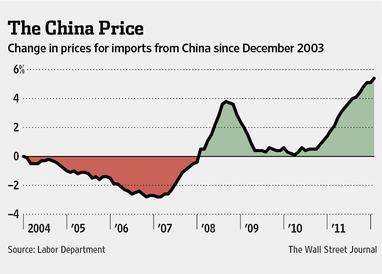The Wall Street Journal is good to bird-dog the Federal Reserve on transparency, and it gets results even before publishing its story.
The paper reports that the central bank, which doubles as a bank regulator, has all but quit having public meetings on new rules:
The Fed is making these sweeping changes—the most dramatic since the Great Depression—almost completely without public meetings. Rather than discussing rules and voting in public, as is done at other agencies with which the Fed often collaborates, Fed Chairman Ben Bernanke and the Fed’s four other governors have held just two public meetings since July 2010. On 45 of 47 of the draft or final regulatory measures during that period, they have emailed their votes to the central bank’s secretary.
The votes, in turn, weren’t publicly disclosed until last week, after The Wall Street Journal requested the information for this article. On Feb. 14, for the first time, the Fed posted on its website the names of the Fed governors voting for or against each closed-door regulatory action on Dodd-Frank since July 2010, when that law was enacted.
The Fed isn’t breaking any laws by not having open meetings. But it is breaking from a long tradition of airing regulatory matters at open meetings. Bipartisan critics—including lawmakers and former regulators—say the Fed’s cloistered approach deprives the public of insight into how rules are being written and makes it harder for Congress and others to hold them accountable for their decisions.
— If you’re like me and were behind on news of the Midwest’s Asian carp invasion, this terrific Bloomberg BusinessWeek story will get you caught up on all you’re missing. Like that the U.S. has an unofficial carp czar, that the things jump ten feet out of the water when they hear boats, and that the fight to keep them from entering the Great Lakes employs mass electrocution and fish poisonings when “environmental DNA” readings detect carp.
Asian carp have received more attention than usual because their presence immediately drives off business. As Lodge puts it: “When you’ve got a 40-pound fish jumping into a boat and breaking jaws and knocking out teeth, people tend to stop boating and fishing. That has a demonstrable economic effect.”
Unfortunately, BusinessWeek‘s online story doesn’t have the print version’s amazing picture of carp jumping out of the water, so here’s one:
Here’s some more good color:
Locally, states and towns are doing what they can to kill the fish by more traditional means, such as catching them and eating them. Directly below the electric barrier, Illinois Natural Resources has hired fisherman to pull as many carp as possible from the water. They netted 62 tons in 2010 and caught roughly 400 tons in 2011. The department is also promoting a new sport: aerial bow fishing, in which guys in motorboats with modified bows shoot and then reel in the jumpers. At the second annual Director’s Shoot, 54 teams shot more than 48,000 pounds of fish 120 miles upstream from Havana. At the Boat Tavern, owner DeFord also hosts the annual Redneck Fishing Tournament. She describes it as a “carp rodeo” where boaters with nets try to snag as many fish out of the air as they can in an hour, as if they were netting 30-pound butterflies. This year about 200 people, some wearing helmets and baseball cups, caught 8,977 carp.
Asian carp have been harder to sell to consumers. In March 2011 the Illinois Public Health Dept. approved Asian carp for human consumption. A series of videos posted to the USGS website titled “Flying Fish, Great Dish” hasn’t really caught on. Officials promote carp as a cheap, protein-rich food source that’s lower in mercury than tuna, but in general the fish is considered bony and dirty. “A lot of people call them sewer bass,” says Steve McNitt, the sales manager at Schafer Fisheries in Thomson, Ill. Currently, Schafer turns all the state’s donated catch into an organic fish emulsion fertilizer, but the company is prototyping carp hot dogs, carp burgers, and carp jerky.
— The Journal has an illuminating chart on the rising cost of imports from China:
And Justin Lahart discussed the implications, including higher inflation here, which would not be entirely unwelcome in a still-depressed economy. It should be noted that even these prices are still low– most economists believe China’s prices are manipulating its currency to make its export prices artificially low, though it has let the yuan rise in the last couple of years.
This is good background:
Ryan Chittum is a former Wall Street Journal reporter, and deputy editor of The Audit, CJR’s business section. If you see notable business journalism, give him a heads-up at rc2538@columbia.edu. Follow him on Twitter at @ryanchittum.The U.S. imported $399 billion in Chinese goods last year, according to the Commerce Department. That was quadruple the $100 billion imported in 2000, the year prior to China joining the World Trade Organization, and ten times the $39 billion imported in 1994.



